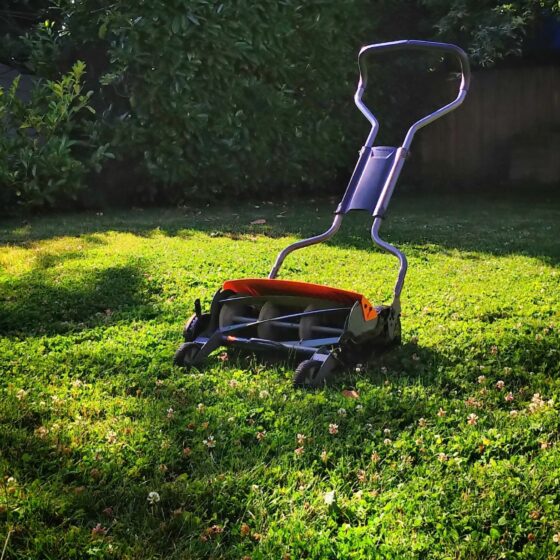Many homeowners don’t know how to tell if a wall is load-bearing. This can be a problem if you’re trying to make changes to your home layout and aren’t sure which walls you can safely remove or alter.
In this article, we’ve gathered some general info about load-bearing walls to help you identify them easier and better plan your home improvement projects.
What Is a Load-Bearing Wall?
First and foremost, it’s important to understand what load-bearing walls are and why it’s so important to know how to identify them.
As the name suggests, these walls carry weight, typically that of the roof and upper floors of a building. So, removing or altering a load-bearing wall severely affects, even compromises, your home’s structure.
Non-load-bearing walls, on the other hand, are there to make your home more appealing, more practical, and better organized. They’re usually made of lighter materials and can be removed or altered without compromising a building’s stability and structure.
Furthermore, non-load-bearing walls only support their own weight and typically don’t have a beam running through them.
How to Determine if a Wall Is Load-Bearing?
As we’ve just mentioned, for any major modification like removing or replacing walls, you’ll need to figure out which walls aren’t load-bearing, that is, which walls are safe to change or move.
Here are some steps you can take to identify load-bearing walls.
Check for Door and Window Headers
A load-bearing wall will have a header above the door or window opening.
Inspect the Roofline
A load-bearing wall will be directly beneath a roof truss or rafter. Plus, almost always, a load-bearing wall in a ranch home will be parallel to the ridge. Interior load-bearing walls will follow the direction of the house’s ridge.
Look for Evidence of Vertical Support Beams (Columns)
A load-bearing wall will have a vertical support beam that holds up the roof or the upper floor.
Pay Attention to Wall Construction Materials
Load-bearing wall construction is typically made from solid materials (e.g., concrete, masonry, or timber) to be able to carry loads.
Non-load-bearing walls, on the other hand, are often made from lightweight materials, such as drywall. A load-bearing wall will look and feel more solid and heavy than a non-load-bearing wall.
Organize a Structural Assessment
An architect, contractor, or engineer can tell you with certainty if a wall is load-bearing or not.
Successfully identifying a load-bearing wall in a two–story house is especially important so as not to compromise your home’s structure and stability. So, if you aren’t confident in making the observation yourself, ask for professional advice.
Consult the Construction Plan
If you’re unsure whether a wall is load-bearing, you can always consult the construction plan of your home. If the original blueprints are available, you’ll find the load-bearing walls are marked with an “S” (structural).
Inspect Joists From Your Attic or Basement
You can identify the load-bearing wall from the attic or basement. Pay attention to how the joists run. Load-bearing walls are perpendicular to them. The walls parallel to joists are probably non-load bearing.
Pay Attention to the Wall’s Location.
It’s highly likely that your home’s exterior walls are bearing some load, as they’re rarely non-load-bearing.
Examples of Load-Bearing Walls
- Walls that support the roof or the upper floor
- Interior walls perpendicular to the main structural supports of the building
- Foundation walls
- Exterior walls
Identifying Load-Bearing Walls by Material
Looking at the construction material is one of the ways to identify load-bearing walls. The sturdier a wall is, the bigger the chance it’s a load-bearing wall.
Depending on the material, there are several types of load-bearing walls:
- Precast concrete wall
- Brick wall
- Stonewall
- Retaining wall, or revetment, or breast wall (for side support)
- Masonry wall
- Metal stud walls with pre-panelized metal sheet cladding
How to Make Changes to a Load-Bearing Wall Safely?
So, now you know how to identify a load-bearing wall and its importance for your home. But what do you do if you want to remove one? Experts say there are ways to make changes to this type of wall without putting the whole structure on the line.
According to an experienced contractor, these are the steps to follow.
Make a Full Structural Assessment
Looking at the solidity of other walls in your house is as important as assessing your load-bearing wall construction.
The information will help you decide whether or not to get rid of a load-bearing wall. In other words, it’s important to make sure other walls can withstand the modification you’re planning to make.
Ask for a Professional Opinion
If you’re planning on altering the wall, consult with a professional about how to do it safely, especially if you aren’t certain whether your wall is fit for any alterations.
Consider Non-Removal
There’s a chance that the removal of the load-bearing wall you had in mind might be impossible. Not every load-bearing wall can be removed without causing damage to the rest of the house.
Save Up Some Cash
The altering costs generally start at about $1,000 but tend to go much higher.
For instance, removing a load-bearing wall in a single-story house can cost you up to $3,000. On the other hand, if you own a multi-level house, your expenses can hit up to $10,000, depending on the complexity of the process.
Secure Appropriate Support First
Dismantle or alter the load-bearing wall only after you’ve secured other support for the house. You can do so by installing temporary support in the shape of beams, columns, and posts. Holding the roof and top floors is essential during the alteration process.
Protect Your Furniture
Take every necessary precaution before demolishing a wall and cover your precious things, as you don’t want any dust and rubble accumulating on your couch, comfy reading chair, etc.
Organize Construction Waste Removal
Demolishing a wall is a messy process bound to produce tons of rubble. To prevent construction waste from building up and working among heaps of debris, rent a roll-off dumpster or hire a construction waste removal company to deal with it for you.
Conclusion
Not knowing how to determine if a wall is load-bearing can hinder your renovations. But with the right information, identifying, altering, or even removal of such walls can be performed safely and efficiently.
By following the tips in this article, you’ll be able to do exactly that — positively identify load-bearing walls and make changes without compromising the structure and safety of your home.
FAQ
Are all exterior walls load-bearing?
Most exterior walls are load-bearing. They carry the weight of the roof and any other top floors and additions that may be attached to them.
However, there are cases of homes whose exterior walls aren’t load-bearing.
How much does it cost to find out if a wall is load-bearing?
Finding out if a wall is load-bearing usually entails a structural inspection. For a whole home inspection, you’ll need to put aside $300–$750, depending on your home’s type and size.
Naturally, inspecting only one wall is cheaper, but keep in mind that a structural engineer will still charge you $100–$200 per hour, not including travel expenses.
How can you tell a load-bearing wall from a non-load-bearing wall?
There are several ways to figure out the type of wall:
- By construction material (load-bearing walls are made from concrete, masonry, steel, or timber, while non-load-bearing walls are typically made from drywall)
- By the wall’s location (load-bearing walls are typically located near the foundation or on the exterior of your home, while non-load-bearing walls are generally located in the middle of the house, perpendicular to the load-bearing walls)
- Consult with a professional (if you’re unsure whether a wall is load-bearing, it’s best to consult a professional (e.g., a structural engineer)
Can a single brick wall be load-bearing?
Because of its solid appearance, a brick wall can be mistaken for a load-bearing one. So, bear in mind that a masonry wall doesn’t necessarily have to be load-bearing.
To determine whether your masonry wall is load-bearing, examine its orientation and location, as these factors will usually give away its type.
What happens if you remove a load-bearing wall?
In the worst-case scenario, removing or altering a load-bearing wall can lead to a structural collapse of your house.
Alternatively, the absence of a load-bearing wall will put additional strain on all other walls and lead to cracks if you’re not using beams and columns that would help bear the weight. You may also end up with a sagging ceiling or sticking doors and windows.
Needless to say, removing a load-bearing wall can be a serious undertaking. So, if you’re unsure how to tell if a wall is load-bearing and how to correctly remove it, consult with a professional to avoid serious injuries or even losing your home.













